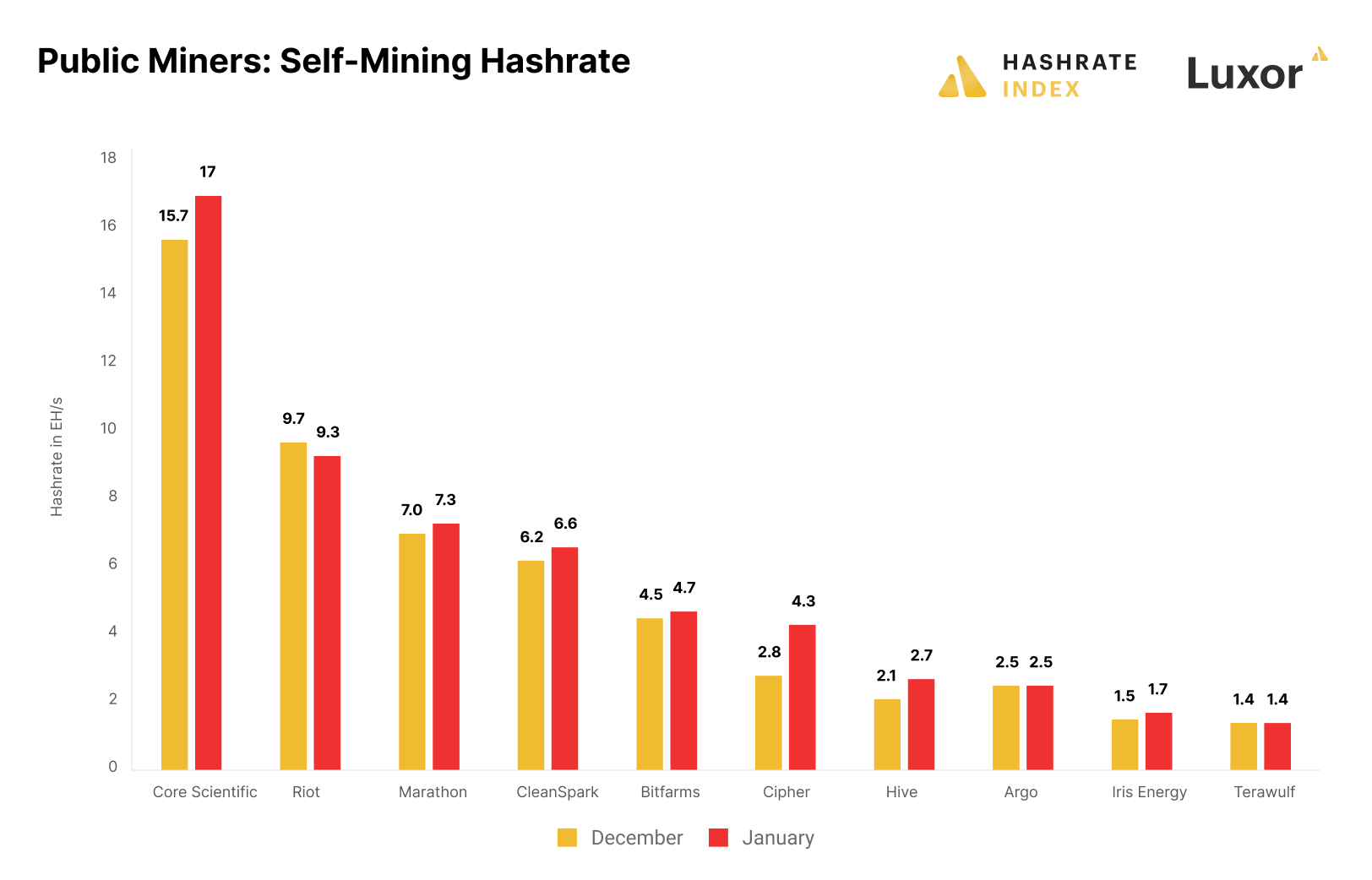The first 2023 production update of publicly traded Bitcoin (BTC) mining companies shows a steady increase in the hash rate and an increase in BTC production compared to the previous month, according to a new analysis from Hashrate Index.
Most public miners increased their bitcoin production in January, with CleanSpark boosting it by 50%, reaching a record monthly production of 697 Bitcoins. Leading BTC production, Core Scientific reached 1,527 coins mined in January, followed by Riot, the second largest producer, with 740 Bitcoins mined in the month.
Marathon and Cipher have seen significant increases in Bitcoin production, reaching 687 and 343 Bitcoins generated, respectively, compared to 475 and 225 in December.
According to Bitcoin mining analyst Jaran Mellerud, better weather conditions in January and stable electricity prices helped miners boost production. “In December, a winter storm swept across the North American continent, causing electricity prices to soar that periodically forced many of these companies to scale back operations. With the milder weather in January, electricity prices stabilized and miners were able to achieve higher uptime.”
The hash rate increased for most public miners in January, but at a slower rate than expected. The exception is Texas-based Cipher, which increased its hash rate by more than 50%, to 4.3 EH/s. “Cipher has been building a lot during this bear market, and I expect the company to reach its hash rate goal of 6 EH/s of self-mining capacity by the end of Q1 2023,” Mellerud noted.
CleanSpark also increased its hash rate to 6.6 EH/s from 6.2 EH/s in December, following a series of acquisitions in late 2022. Hive also posted growth in January, with its hash rate increasing. hash of almost 30%, from 2.1 to 2.7 EH / s. “The company continues to replace its fleet of GPUs with ASICs, primarily with its in-house designed Buzzminers,” he commented on Hive’s performance.

Core Scientific continued to increase its hash rate, reaching 17 EH/s in January from 15.7 in December. However, the figures are expected to be affected by the company’s bankruptcy proceedings, which include an agreement with New York Digital Investment Group (NYDIG) to pay off outstanding debt of $38.6 million by delivering more than 27 000 mining machines used as collateral. – representing 18% of Core Scientific platforms.
Core Scientific filed for Chapter 11 bankruptcy on December 21, seeking to reorganize its debts after months of financial difficulties due to rising electricity costs and low Bitcoin prices.
Mellerud also noted that “these companies have, at various times, extended the timetable for their lofty hashrate expansion targets. Most of them have plans to dramatically increase their operating hashrate by the end of the second quarter of this year. At the current rate, most will probably have to push their expansion plans further into the future.”






